From an A student to a hippie drifter, Paul Watkins thought he'd found meaning at the Spahn Ranch with the Manson Family — until Manson tried to kill him.

RXSTRPaul Watkins
While Charles Manson has cemented his permanent place in American history, less is known about most of his faithful, murderous cult, the Manson Family. This ragtag band of hippies and social outcasts boasts a few recognizable names, but what about the lesser-known members of this notorious cult?
Among those Manson Family members whose story isn’t quite so well-known is Paul Watkins. He entered into Manson’s orbit a year before the murders of Sharon Tate and her companions Jay Sebring, Abigail Folger, and Wojciech Frykowski as well as the LaBiancas in August 1969. However, he managed to listen to his gut, sense the coming danger, and flee the group before things turned murderous.
For a few months beforehand, however, Watkins gained Manson’s trust and was a staple at their infamous hideout at Los Angeles’ Spahn Ranch. Watkins was such a reliable companion to Manson that Manson put him in charge of countless cult operations.
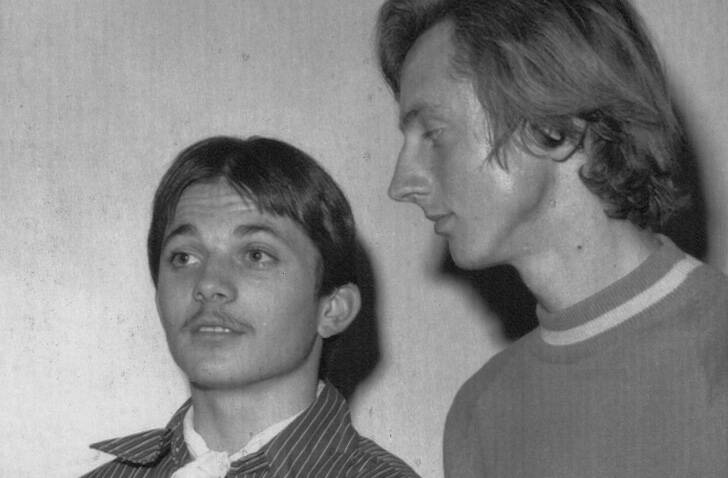
RXSTRPaul Watkins (left) dropped out of high school and started experimenting with drugs. He met Charles Manson when he was 18.
According to Jeff Guinn’s Manson: The Life and Times of Charles Manson, Paul Watkins was the most significant male member of the Manson cult.
Watkins came to the Family as an 18-year-old dropout but soon established himself as the group’s most successful recruiter for new members — mainly women — and became Charles Manson’s right-hand man. So how did he come to finally turn against his cult’s charismatic leader and help bring him down?
How Paul Watkins Became A Manson Family Member
Born on Jan. 25, 1950 in Sidon, Lebanon to a father working in the oil industry, Paul Watkins and his family moved to Beaumont, Texas when he was four years old. Soon they moved to Thousand Oaks, California, where he enjoyed an adolescence full of hiking, singing, and attending church.
In fact, the young Watkins had become an evangelical for a time but — as he writes in his autobiography, My Life with Charles Manson — his religious interests later gave way to musical ones. As a boy, Watkins developed an interest in singing that quickly became his chief passion.
Meanwhile, Watkins also enjoyed an early life defined by his charisma and popularity at school. He was student-body president time and again from grade school through high school. However, his interests in studies soon waned and this true child of the ’60s eventually dropped out of high school and got into psychedelics.
“I preferred smoking grass and playing music to sitting in a classroom,” Watkins wrote. “The world seemed utterly insane to me and I began experimenting with other drugs…Others my age were enlisting; there was racial violence throughout the country — riots daily; plus, the overriding awareness that a nuclear holocaust could wipe out everything.”
In the midst of this national and existential personal crisis, Watkins was put on probation in 1967 for marijuana possession the same week two of his friends were killed in Vietnam. And then, Watkins met Charles Manson.
In the spring of 1968, the 18-year-old, weed-smoking dropout spent much of his time dropping acid in the San Fernando Valley and playing his French horn. According to The Guardian, Watkins also drifted around San Francisco’s legendary Haight-Ashbury neighborhood, the home of the hippie movement.
He first happened upon the Mansons while looking for a friend at a house where the Family was squatting. Sometime later, Watkins came across the same Manson girls he’d met at the house driving a hollowed-out, black-painted school bus while hitchhiking. They picked him up and brought him to Spahn Ranch in the Santa Susana Mountains north of Los Angeles.
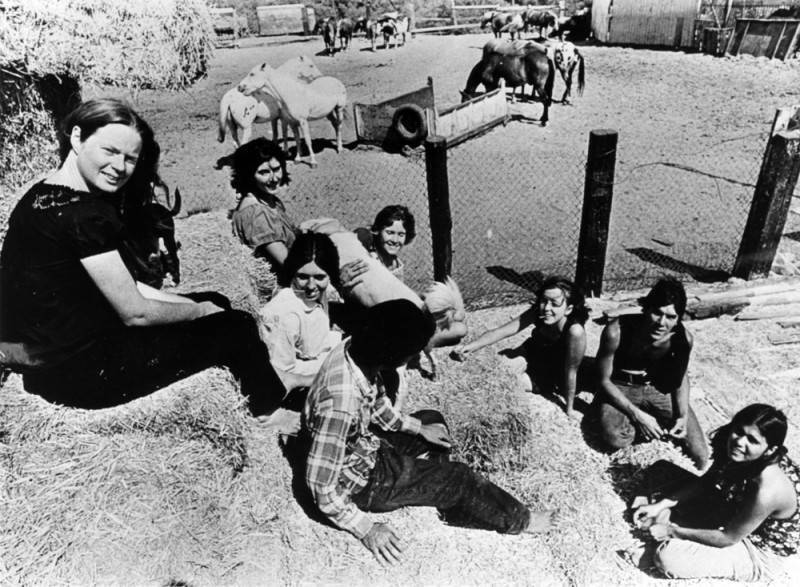
Michael Haering/Los Angeles Public LibraryMembers of the Manson Family at the group’s makeshift home at Spahn Ranch outside of Los Angeles.
The abandoned movie set had become the main hub of operations for Manson and his acolytes, including Mary Brunner and Squeaky Fromme, though they did have several other hideouts throughout Los Angeles. Those living on the fringes of America’s established norms gravitated to Manson’s new way of life. Watkins, too, opted to follow Manson instead of the older generation’s path.
But for Watkins, it seemed he had happened upon this path in the blink of an eye — as fast as America had descended into the Vietnam era.
Watkins felt an immediate kinship with Manson and the Family. He’d been in trouble with the law, too, and was trying to figure his life out just as they were. They all seemed to feel a certain solidarity together.
Of course, Watkins didn’t yet know how serious Manson was about his theory of “Helter Skelter,” an impending race war. Nor did Watkins consider that Manson would order his followers to bring that war about by violent means. But Watkins would find all this out soon enough when tensions between him and Manson grew dangerous.
Spahn Ranch And Helter Skelter
Though Manson’s time at Spahn Ranch was filled with psychedelic drugs, group sex, and parties, he also had grand plans on his mind in 1968 and 1969. He was attempting to secure a record deal with producer Terry Melcher while preaching Helter Skelter, making drug deals with the Straight Satans motorcycle gang, and also strengthening his cult.
With such unsavory activity going on, ranch owner George Spahn wasn’t too happy with the cast of characters coming in and out of his grounds. Spahn was in the midst of negotiations with developers at the time who made it clear that these undesirable countercultural figures were affecting the property value.
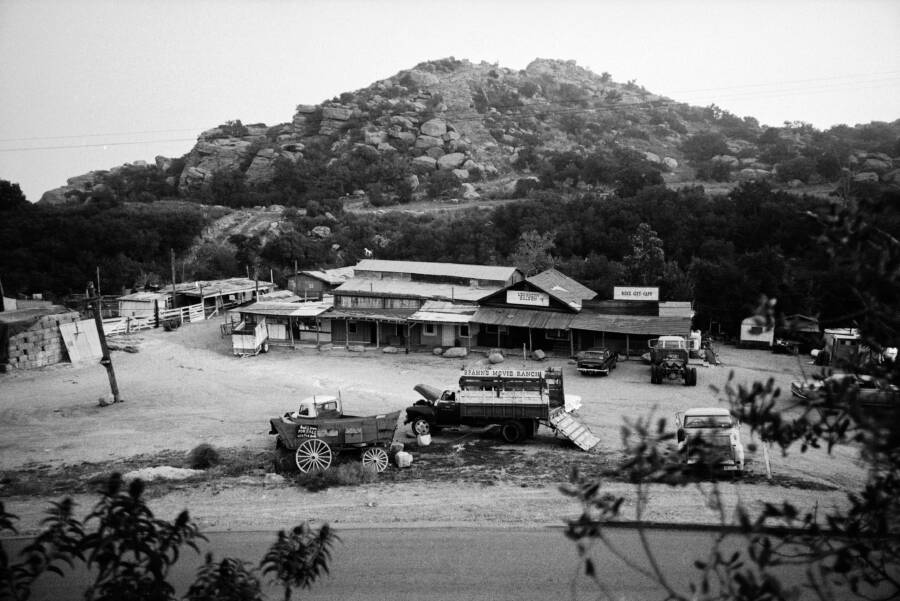
Ralph Crane/The LIFE Picture Collection/Getty ImagesThe Spahn Ranch in the San Fernando Valley where Manson and his “Family” dwelled in the late 1960s.
Meanwhile, Manson taught his Family about the impending race war that would conclude with him and his Family taking over the world after the blacks had eradicated the rest of the country and then couldn’t fend for themselves. While the world was at war, Manson prophesied, he and the Family would wait it out in the desert.
Watkins’ role in this was to be Manson’s “chief lieutenant.” His main job was to recruit new members to the cult, mostly attractive young women, which Manson had Watkins do by enrolling at a local high school. Watkins only attended a couple of weeks. But he was, reportedly, “a good-looking youth with a way with women, [who] had been Manson’s chief procurer of young girls.”
At the same time, Wakins absorbed Manson’s prophecies of “Helter Skelter” and grew increasingly afraid of the impending violence. He implored Manson to escape to the desert to wait out the violence and emerge safely after it was all over. Eventually, Manson did send Watkins into the desert (Death Valley’s Barker Ranch) to prepare for Armageddon. But while there, Watkins met a 46-year-old miner who would show him that the world wasn’t about to end after all.
Charles Manson And Paul Watkins Clash
At the isolated Barker Ranch, Watkins met Paul Crockett. Highly familiar with the Church of Scientology, Crockett was frequently visited by Manson Family members and fed them an alternative worldview that undermined Manson’s own.
As Manson’s number one recruiter, Watkins felt it was important to let his boss know about Crockett’s teachings. Watkins believed Crockett could compel members to drop out of the Family and make Manson’s house of cards come tumbling down.
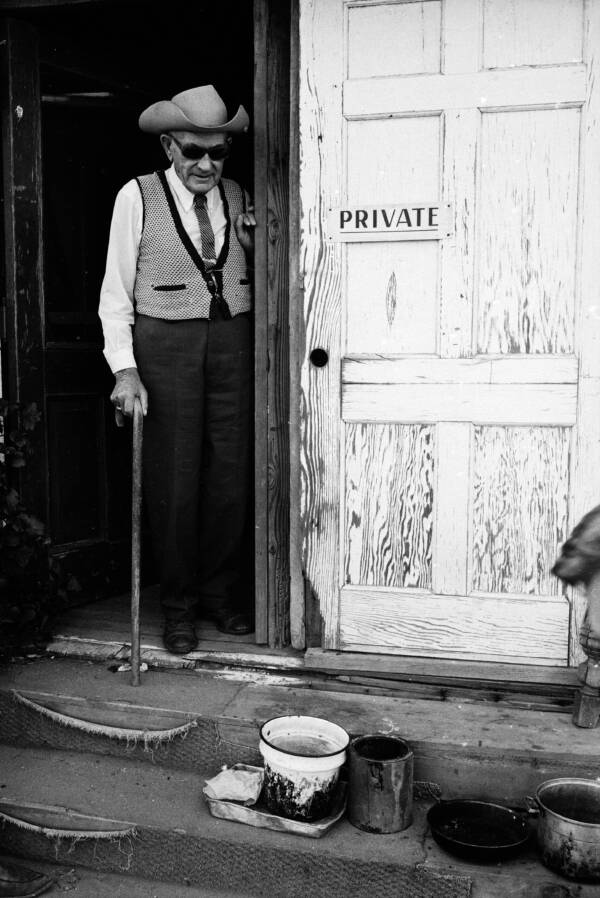
Ralph Crane/The LIFE Picture Collection/Getty ImagesGeorge Spahn, blind owner of Spahn Movie Ranch, in late 1969.
When Manson heard about this, paranoia struck him immediately. Because Manson was busy networking in L.A., he couldn’t remedy this and so he channeled his anger toward Watkins — and even tried to kill him. As Manson pounced on Watkins and strangled him, the scared lieutenant tried to shake him off but was quickly losing breath and began to pass out. Watkins thought he was going to die and stopped fighting.
“Charlie was telling me to die. He was just saying ‘Die,’ just ‘Die.’ And I didn’t just die. So he jumped up and started choking me. At first I sort of fought it…Then I knew there was something else going on, so I didn’t. I just laid there…I was scared, and really, really afraid. He was laying on top of me, looking into my eyes… and then he smiled and looked in my eyes and he says, ‘I’m going to kill you now.'”
But at that moment, Manson let go.
“And he jumped off and he sat back and smiled and said, ‘Then if you are willing to die, then you don’t have to die.’ Then he said, ‘Come on and make love with me.'”
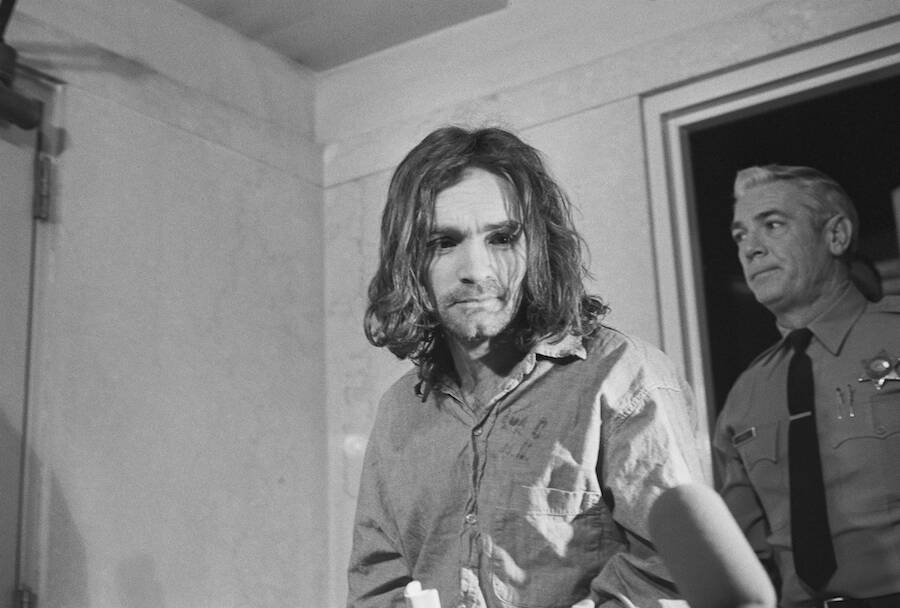
Getty ImagesCharles Manson
Until this incident, Watkins was one of Manson’s most devoted, professional, and reliable acolytes. This changed everything for Watkins, however. Doubts about his life as a Manson Family member now began to creep into his every thought.
When Watkins Left The Manson Family
By the summer of 1969, numerous Family members likewise started to reconsider their position on the cult. Living in the desert and preparing for the end of the world had left many dissatisfied, with the influx of shady characters and a growing weapons arsenal dissuading them even more.
Family member Patricia Krenwinkel, for instance, had left with a biker but Manson found them outside of L.A. and convinced her to come back. She was stunned by his ability to locate her — and felt it was his magical powers, rather than his network of biker contacts, that led him to her.
Member Leslie Van Houten started complaining about the stagnant nature of their lives, which led Manson to put her in his dune buggy and drive to the top of the Santa Susana mountains.
“If you want to leave me, jump,” he told her. She didn’t.
Soon, both Krenwinkel and Van Houten would be involved in the bloody murders that made the Manson Family infamous.

Bettmann/Getty ImagesManson family members and murder suspects Susan Atkins, Patricia Krenwinkle, and Leslie van Houton.
Around this same time, Manson began to feel that it was necessary to kickstart “Helter Skelter” right away, lest his increasingly dissatisfied cult dissolve entirely. He reportedly told Watkins that he believed black people were too stupid to initiate the race war themselves so Manson had to show them how.
Watkins knew this meant violence was coming — and he wanted no part of it. So the very next time Manson sent him to check on Barker Ranch, Watkins joined Crockett and never returned.
Sure enough, the Manson Family murdered Gary Hinman in July of 1969, with the Tate-LaBianca murders early the next month at 10050 Cielo Drive.
Paul Watkins had extricated himself from Manon’s proverbial grip just before the bloodbath began.
According to Watkins, he caught wind of the forthcoming Tate murders with Crockett and a few other defectors while in Kingman, Arizona. “Wouldn’t it be somethin’ if old Charlie did that,” Crockett remarked. Watkins initially thought of it as a joke.
Paul Watkins Helps Bring Manson Down
Paul Watkins was so shaken by the murders that he decided to testify against his former leader during his 1970 trial. According to The New York Times, the then-20-year-old testified that Manson had told him that he was involved in another murder besides the Tate-LaBianca incidents.
It was in September 1969 — a month after the killings — that Manson had told him he was merely “showing blackie how to do it.” Watkins explained to the court that Manson felt destined to initiate the “Helter Skelter” race war and that he had to show black people how to go about doing this.
Watkins was asked by the judge if he could be more specific about Manson’s comments regarding this separate homicide. Watkins said Manson told him “about killing Shorty,” a stuntman and bouncer named Donald O’Shea who lived on Spahn Ranch while the Family dwelled there too.
The Family is believed to have killed O’Shea and buried him in the desert. According to ThoughtCo, his remains were found in Dec. 1977 after Steve Grogan drew a map of the location and handed it to authorities.
Watkins’ testimony largely described Manson’s philosophy including the cult leader’s belief that loving someone meant being ready to kill for them.
Life After Charlie
According to Vincent Bugliosi’s Helter Skelter: The True Story of The Manson Murders, Watkins died of leukemia in 1990 at the young age of 40.
In between his life with Charles Manson and his early death, however, Watkins had built quite a life for himself. He married twice, had two daughters with his second wife, Martha, and moved to the desert town of Tecopa, California on the edge of Death Valley.
He managed to become the first president and founder of the Death Valley Chamber of Commerce and acted as the unofficial mayor of the town. Together with his wife, he mined rocks in the desert and sold them in their joint jewelry store in Tecopa.
In whatever spare time was left between fatherhood, married life, a newfound political career, the jewelry business, and writing his memoir, Watkins formed a rock band called Desert Sun and lectured countless audiences on the slippery slope of substance abuse and the psychology of cults, much like the one he’d joined — and escaped — years before.
After learning about Charles Manson’s right-hand man Paul Watkins, read about infamous Manson Family members Tex Watson and Linda Kasabian.





